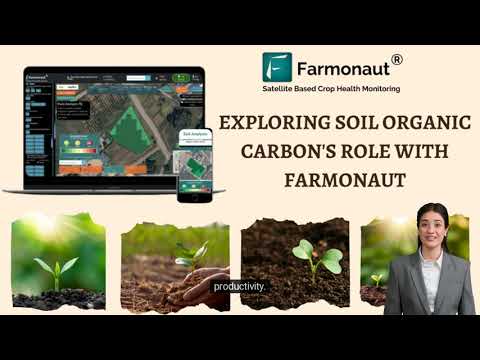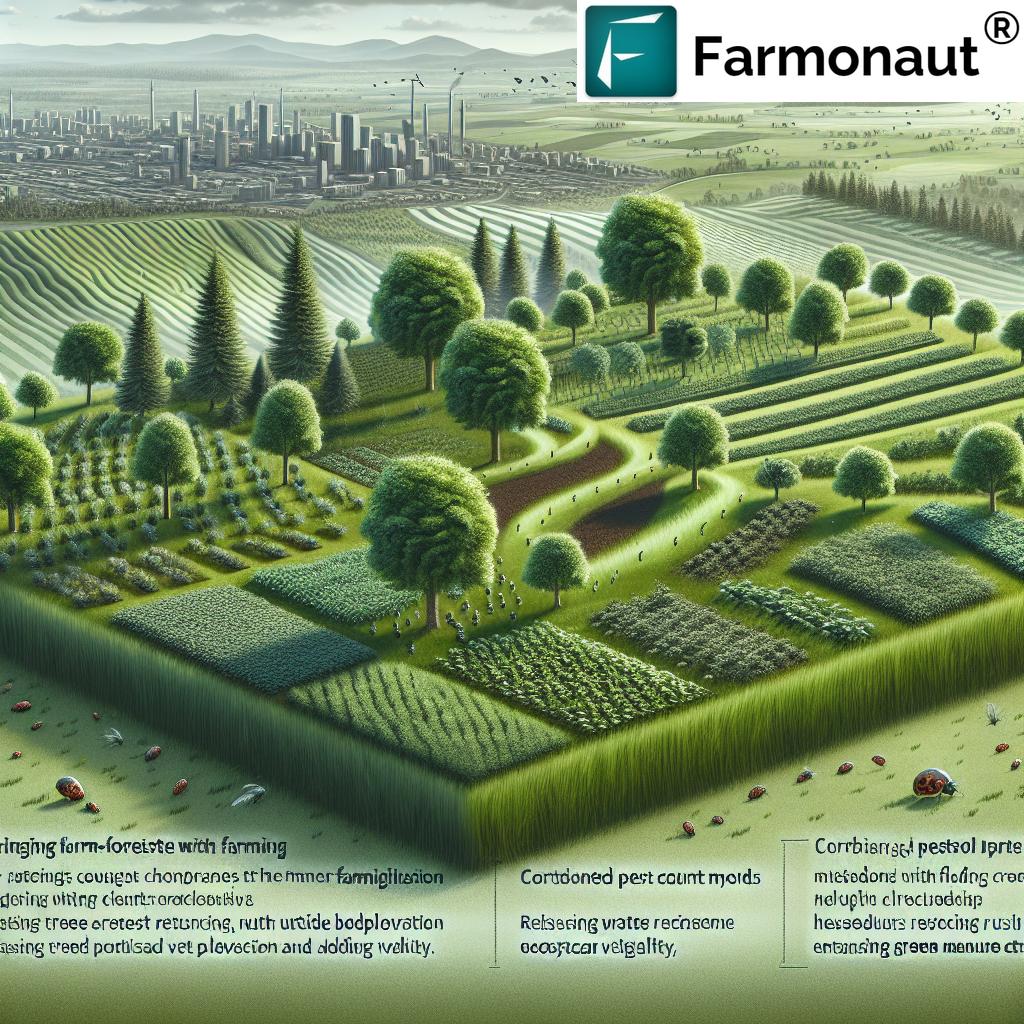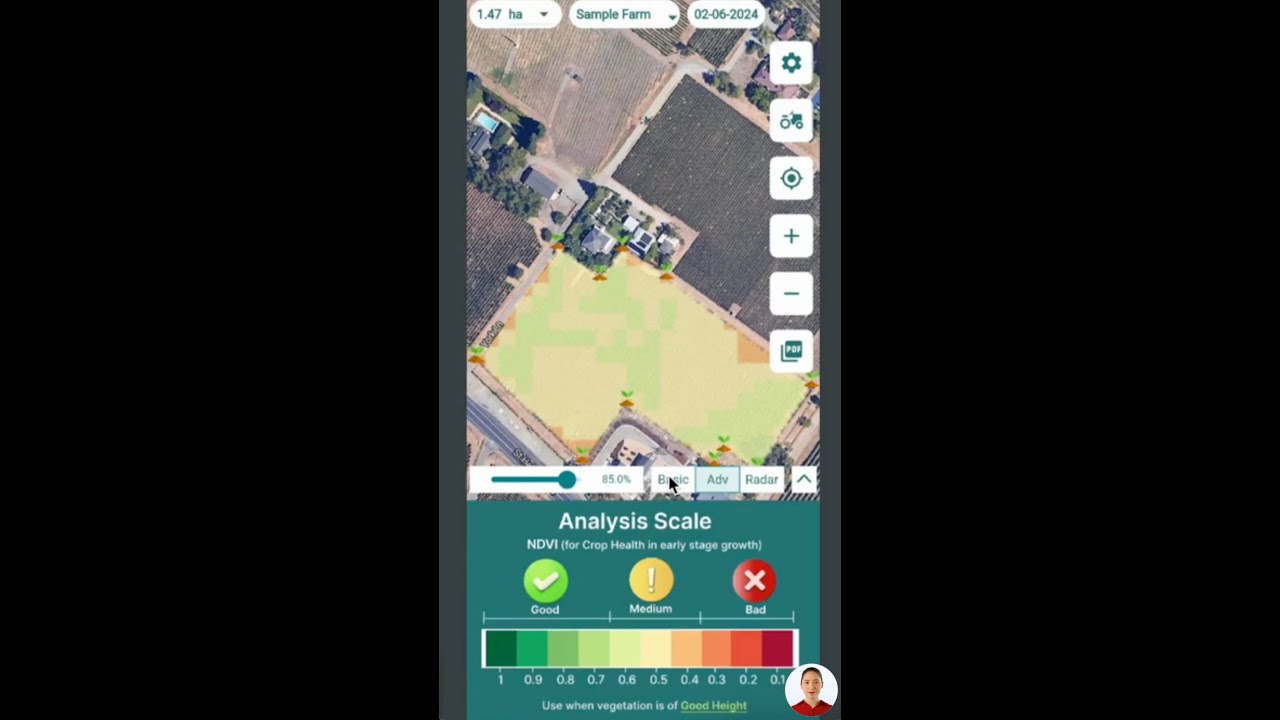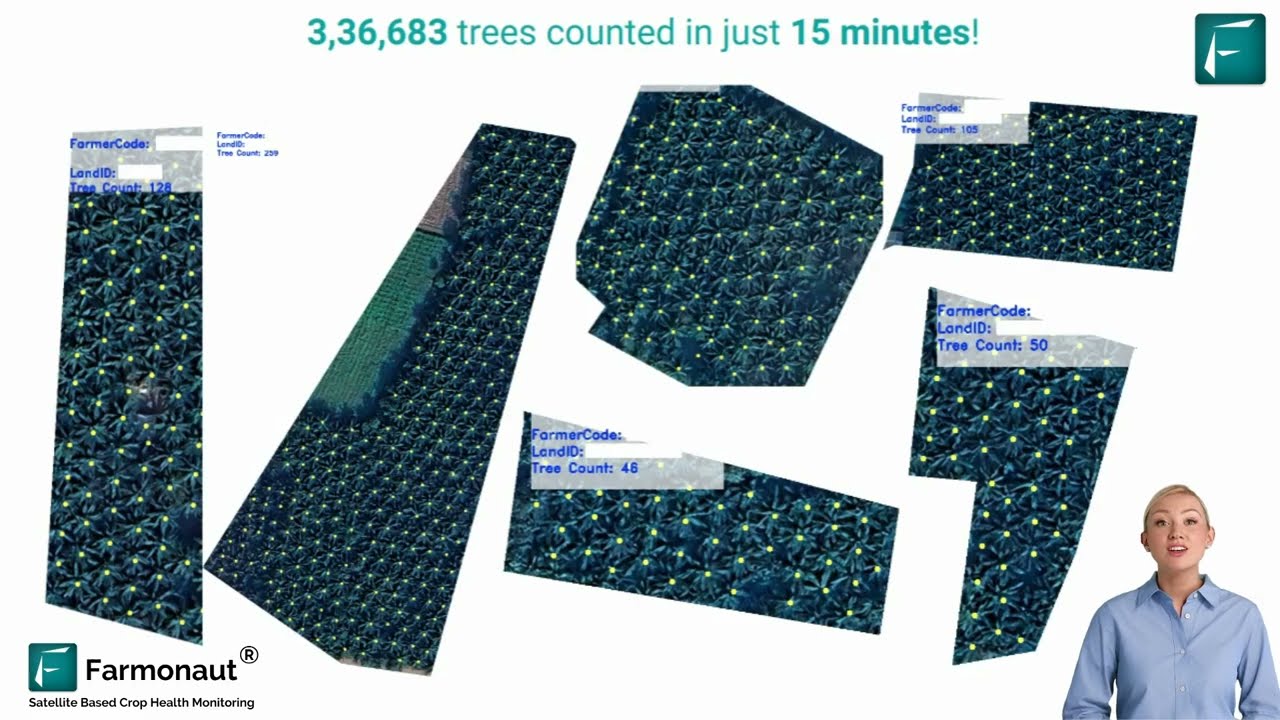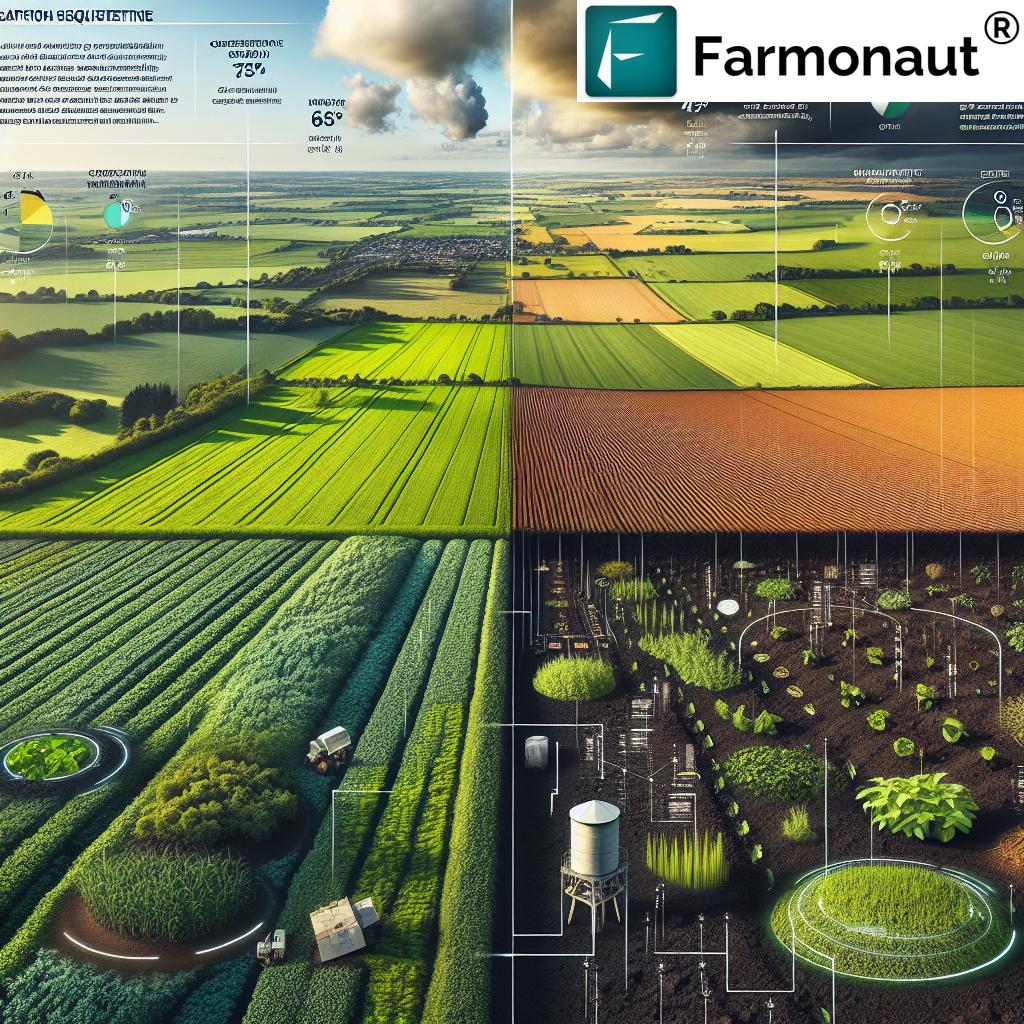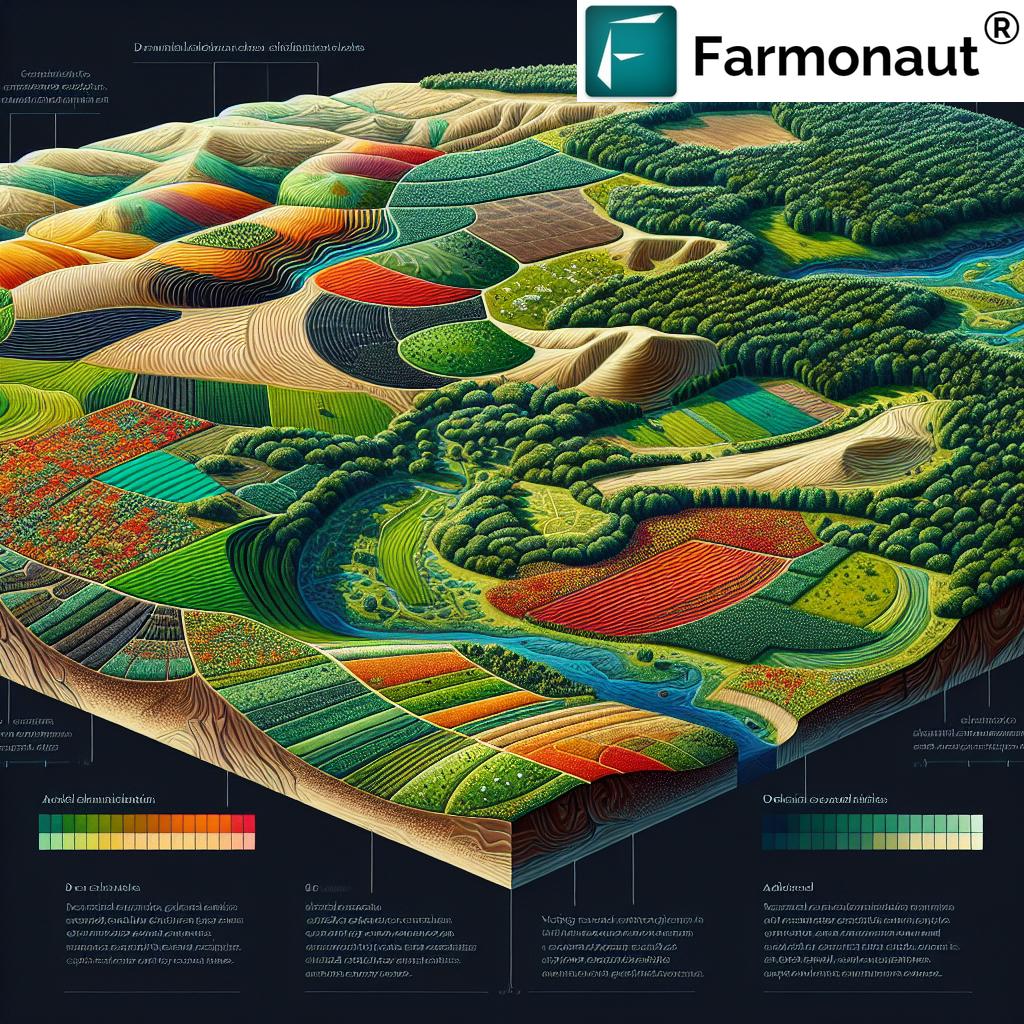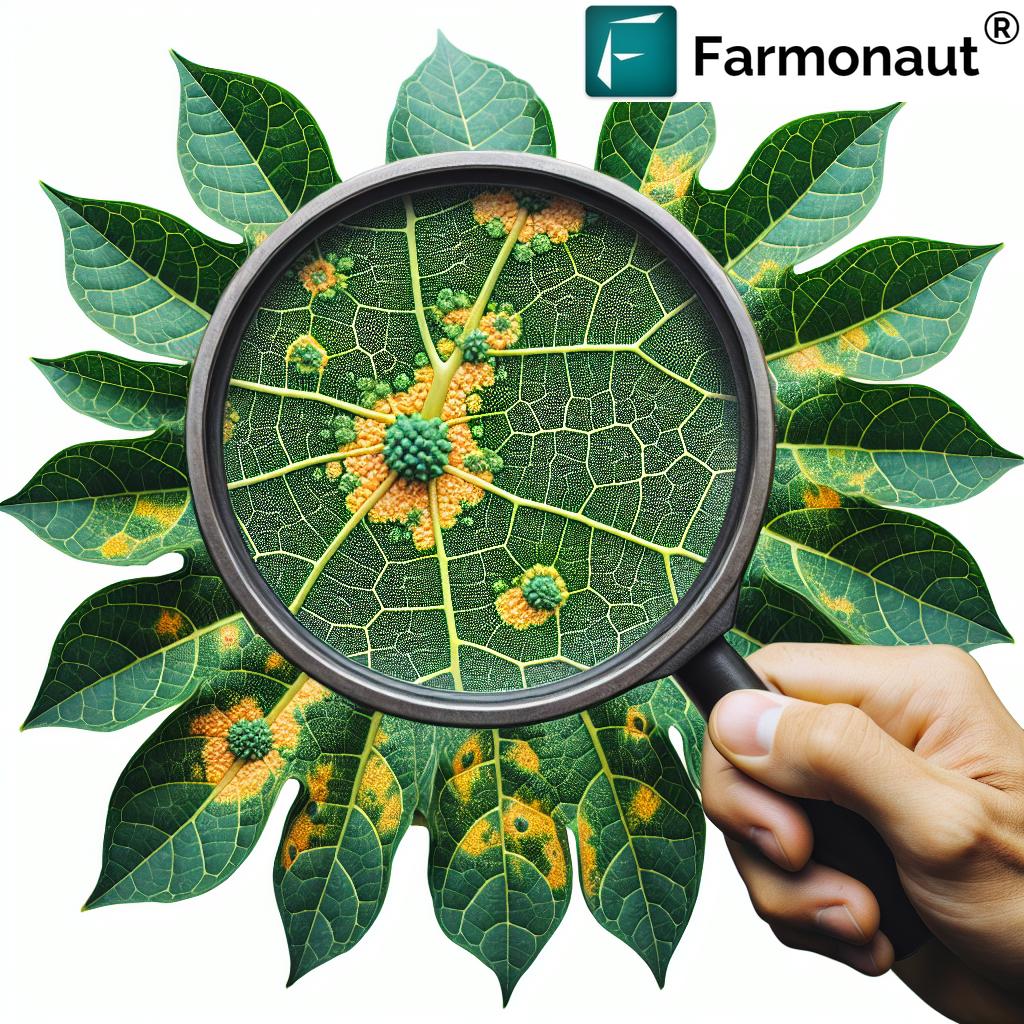Table of Contents
- Introduction to Sustainable Lawn Care in Agriculture
- Role of Lawns in Agriculture, Farming, and Forestry Systems
- Step 1: Understanding and Improving Soil Health in Lawns
- Step 2: Biodiversity in Lawns – Principles and Practices
- Step 3: Water Conservation for Lawns & Erosion Control
- Step 4: Organic Lawn Fertilization and Soil Enrichment
- Step 5: Integrated Pest Management for Lawns
- Step 6: Eco-Friendly Mowing and Sustainable Maintenance
- Step 7: Agroforestry Lawn Integration & Silvopasture Strategies
- Comparison Table: Sustainable Lawn Care Practices & Environmental Benefits
- Challenges & Considerations in Sustainable Lawn Care Practices
- Farmonaut: Empowering Sustainable Lawn Care in Agriculture & Forestry
- Frequently Asked Questions (FAQ)
- Conclusion
“Up to 50% of lawn biodiversity can be increased by integrating sustainable agriculture and forestry practices.”
Lawn Care: 7 Steps to Sustainable Agriculture
Lawn care in agriculture and forestry is far more than a matter of curb appeal—it’s foundational to sustainable landscapes, soil health improvement, and biodiversity enhancement. Traditionally, lawns are associated with residential and commercial areas, but a deeper look reveals their crucial role across various agricultural and forestry settings.
In this comprehensive overview, we will explore how sustainable lawn care practices drive environmental stewardship, support eco-friendly agriculture, and empower the integration of trees, pastures, and crops for climate-ready landscapes.
This guide is designed for farmers, foresters, land managers, and all sustainability-minded readers interested in integrating lawns into agricultural and forestry operations. We will delve into actionable steps, championing organic fertilization, water conservation for lawns, integrated pest management for lawns, and more—equipping you with the knowledge to foster healthier soils, robust biodiversity, and climate-resilient fields.
The Role of Lawns in Agriculture, Farming, and Forestry Systems
Sustainable lawns and managed lawn care are not limited to residential landscapes. Their significance in agricultural and forestry systems spans:
- Soil Erosion Control and Protection: Lawns serve as protective covers, anchoring soil structure with their dense root systems, thereby reducing erosion from wind and rain. This maintains nutrient levels and prevents loss of valuable topsoil.
- Biodiversity Enhancement in Lawns: Managed lawns that incorporate a variety of grass species and native flora can attract pollinators, beneficial insects, and other wildlife, enhancing ecosystem health and resilience.
- Carbon Sequestration: Green lawns actively capture and store carbon dioxide (CO₂), helping to mitigate climate change, especially when coupled with thoughtful mowing, compost application, and organic fertilization.
- Integration with Agroforestry and Farming: Lawns are increasingly being incorporated into agroforestry systems (agroforestry lawn integration) such as silvopasture, where they provide forage for livestock, help stabilize land, and support wildlife corridors.
We will now elaborate on a step-by-step action plan for sustainable lawn care in agriculture and forestry—outlining the seven most impactful approaches rooted in science and ecological best practices.
Step 1: Understanding and Improving Soil Health in Lawns
Why Soil Health is the Foundation of Sustainable Lawn Care
The soil beneath our lawns is the engine room of landscape vitality. Soil health improvement is integral to supporting plant growth, biodiversity in lawns, and the overall productivity of agricultural systems.
- Soil Structure and Composition: Healthy lawns feature soils rich in beneficial microbial activity, stable aggregates, and abundant organic matter.
- Water Retention and Drainage: Maintaining the ideal balance ensures lawns are resilient during both drought and heavy rainfall.
- Root Support: Strong roots in well-managed soil help anchor plants and support natural erosion control.
- Carbon Sequestration: Soil rich in organic content can store up to 25% more carbon, amplifying a lawn’s climate benefits.
“Healthy soil can boost lawn carbon storage by 25%, supporting eco-friendly and sustainable landscapes.”
Best Practices for Soil Health Improvement:
- Soil Testing: Regularly analyze nutrient content, pH, organic matter, and compaction.
- Adding Compost: Annual or bi-annual applications of compost enriches nutrients and fosters beneficial microbes.
- Organic Mulching: Using natural mulches improves moisture retention and soil structure.
- Reducing Chemical Fertilizer Use: Shifting toward organic lawn fertilization minimizes soil degradation and chemical residues.
Lawns with robust soil health are better poised to support productive crops, thriving trees, and healthy livestock—demonstrating the vast potential of eco-friendly lawn maintenance for global agriculture and forestry.
Step 2: Biodiversity in Lawns – Principles and Practices
The Power and Practice of Enhancing Biodiversity
Fully managed lawns, primarily consisting of monoculture grass species, often fall short on supporting a vibrant ecosystem. Biodiversity in lawns is about incorporating a variety of native species and creating a habitat mosaic that provides niches for pollinators, beneficial insects, birds, and microbial communities.
- Diverse Planting: Encourage the establishment of different grass and flora species—not just turf—within lawns.
- Natural Growth Areas: Allow some patches to grow wild or less regularly mowed to foster wildflowers and insects.
- Buffer Strips and Edges: Leaving unmowed borders or native wildflower zones adjacent to agricultural fields vastly increases biodiversity and prevents nutrient runoff.
- Integrated Weed Management: Rather than blanket chemical treatments, use targeted removal or hand weeding.
The environmental benefits of this approach include enhancement of ecosystem resilience, reduction of pest outbreaks, and support for pollinator populations—critical for agriculture and forestry integration.
Step 3: Water Conservation for Lawns & Erosion Control
Smart Approaches to Irrigation and Sustainability
Water is an essential but finite resource in agriculture and forestry. Water conservation for lawns is fundamental to sustainable lawn care practices.
- Deep, Infrequent Watering: Rather than shallow daily watering, use less frequent, deeper irrigation to encourage extensive root growth.
- Selecting Drought-Tolerant Grass Species: Choose resilient grass and plant species that can thrive in low-water conditions.
- Rainwater Harvesting: Collect and redirect rainwater to irrigate lawns and buffer against dry periods.
- Efficient Irrigation Systems: Use drip systems, soaker hoses, or automated irrigation controllers to minimize water waste.
These strategies not only reduce water use, but also strengthen the resilience of agricultural lawns and green spaces, while reducing the demand for limited irrigation resources.
Erosion Control with Lawns: Protecting the Land
- Dense Canopy and Ground Cover: Lawns that are allowed to grow fuller, with denser turfs and less mowing, form an effective barrier against erosion.
- Sloped Land Management: Covering slopes surrounding crop or forest zones with adaptable lawn species stabilizes soil, reduces runoff, and captures sediment.
Lawns as protective covers are vital for preventing nutrient loss and maintaining productive soils, especially in the context of integrating forestry or agricultural operations on marginal lands.
Step 4: Organic Lawn Fertilization and Soil Enrichment
Building a Living Soil with Natural Inputs
Organic lawn fertilization is pivotal for minimizing chemical input and ensuring the long-term health of land. Unlike synthetic fertilizers—which can increase contamination risk and disrupt microbial activity—organic amendments align with sustainable management and environmental responsibility.
- Compost Application: Spreads of mature compost directly replenish nutrient levels and improve soil structure.
- Natural Mulches: Protect the surface, conserve moisture, and slowly release nutrients as they biodegrade.
- Animal Manures: Well-composted manure offers a potent, slow-release form of organic fertilization, supporting robust root growth.
- Green Manures & Cover Crops: Introducing nitrogen-fixing plants further enriches soils and boosts resilience.
Benefits:
- Reduces dependence on synthetic chemicals
- Supports biodiversity and microbial health
- Minimizes water contamination risks
- Enhances carbon sequestration and overall ecosystem stability
Adopting these methods translates into cost-effective lawn management, improved sustainability, and more robust agricultural or forestry production systems.
Step 5: Integrated Pest Management for Lawns
Sustainable Solutions to Pest Challenges
Controlling pests in lawns and landscapes demands a shift from heavy chemical pesticide application to holistic integrated pest management for lawns (IPM). This approach blends biological, physical, and cultural controls to guard agricultural and forestry systems against pest threats while supporting overall biodiversity.
- Biological Controls: Release and support of beneficial insects (ladybugs, predatory mites) to tackle harmful pest populations.
- Cultural Practices: Crop rotation, adjusting mowing schedules, and proper fertilization to create less favorable environments for pests.
- Physical Barriers: Use of nets, fences, and manual removal.
- Selective, Targeted Chemical Applications: Only as a last resort, using minimal, spot-application strategies.
The benefits of IPM include reducing chemical input, preventing pest resistance, and protecting non-target species vital to ecological balance.
Step 6: Eco-Friendly Mowing and Sustainable Maintenance
Adopting Eco-Friendly Lawn Maintenance Techniques
Traditional lawn maintenance can contribute to emissions, resource depletion, and the loss of beneficial plants and insects. Eco-friendly lawn maintenance requires:
- Reducing Mowing Frequency: Permit lawns to grow longer during dry spells or in select patches, which supports pollinators and biodiversity.
- Electric or Manual Mowers: Replace fossil fuel-driven machines with cleaner alternatives to shrink carbon emissions.
- Leave Grass Clippings: Mulch mowing returns organic matter and nutrients to the soil, reducing the need for fertilizers.
- Targeted Weed Control: Focused removal promotes diverse lawns and avoids unnecessary herbicide use.
These simple updates can dramatically lower carbon footprints while simultaneously encouraging growth of a variety of species in agricultural and forestry lawns.
Step 7: Agroforestry Lawn Integration & Silvopasture Strategies
Merging Trees, Lawns, and Livestock for a Regenerative Landscape
Agroforestry lawn integration is the holistic approach of combining trees, shrubs, lawns, and livestock/forage within one landscape. This creates resilient systems with a suite of environmental and economic benefits.
- Silvopasture Systems: Interplanting trees and managing lawns as livestock forage offers shade, improves animal welfare, and diversifies farm income.
- Windbreaks and Shelterbelts: Planting lawns between rows of trees functions as effective windbreaks, reducing wind speed, preventing soil erosion, and safeguarding crops.
- Forest Edges and Buffer Strips: Well-tended lawns on the margins of woodland offer critical habitat and migration corridors for wildlife.
This integration maximizes land use efficiency, protects soil, enhances biodiversity, and enables more sustainable and robust agricultural production, especially in landscapes vulnerable to climate change.
Comparison Table of Sustainable Lawn Care Practices and Their Environmental Benefits
| Sustainable Lawn Care Practice | Practice Description | Estimated Reduction in Chemical Usage (%) | Estimated Water Savings (%) | Impact on Soil Health | Biodiversity Enhancement | Compatibility with Agroforestry |
|---|---|---|---|---|---|---|
| Organic Fertilization | Using compost or organic manure instead of chemical fertilizers to enrich soil | 80–100 | 10–25 | High | Yes | Yes |
| Reduced Mowing Frequency | Allowing lawns to grow longer between mowing sessions | 60–90 | 10–20 | Medium | Yes | Yes |
| Integrated Pest Management | Combining biological, cultural, and targeted chemical controls for pests | 75–90 | 0 | High | Yes | Yes |
| Native Plant Selection | Incorporating indigenous grasses and flowering plants into lawns | 60–85 | 5–15 | High | Yes | Yes |
| Composting | Continuous addition of decomposed plant and animal material to lawns | 70–95 | 5–15 | High | Yes | Yes |
| Mulching | Applying organic or recycled cover to the soil surface | 50–80 | 10–30 | Medium | Yes | Yes |
Challenges & Considerations in Sustainable Lawn Care Practices
While sustainable lawn care brings considerable benefits, there are important challenges and trade-offs:
- Maintenance Requirements: Achieving sustainability often demands more attentive management, including regular monitoring and tailored interventions.
- Chemical Use Legacy: Many farms start on landscapes with prior chemical inputs, making transition periods crucial for recovery.
- Biodiversity Risks in Monocultures: Monoculture lawns can lower ecosystem resilience and should be diversified for robustness.
- Water Scarcity: Climate change can push even sustainable systems to their limits; adaptive technologies are a must.
- Economic and Knowledge Barriers: Adoption of climate-smart and eco-friendly lawn practices may require investment in knowledge, training, or new technology.
Mitigation Strategies:
- Gradual transition from intensive chemical lawn care to organic and biological systems.
- Education and demonstration of the positive returns of sustainable approaches for farmers and land managers.
- Harnessing AgTech tools for soil, water, and pest monitoring—such as Farmonaut’s satellite-based advisory platform.
Farmonaut: Empowering Sustainable Lawn Care in Agriculture & Forestry
At Farmonaut, we recognize that sustainable lawn care in agriculture and forestry is inseparable from data-driven land management and real-time decision making. Our platform provides:
- Satellite-Based Crop and Lawn Monitoring: Access to NDVI and other vital indices ensuring lawns maintain optimal health, aiding erosion control and biodiversity enhancement.
- Custom AI Advisory Systems: Real-time, field-specific recommendations for fertilization, pest control, irrigation, and more.
- Resource Management Tools: Tools to reduce wastage of water, fertilizers, and other inputs—maximizing sustainability.
- Blockchain Traceability: Providing robust product journey tracking, ensuring transparency for farms, contract growers, and food brands. Explore our traceability solutions here.
-
API Access for Management Solutions: Developers and organizations can integrate our advanced satellite and weather data API to monitor and manage vast agricultural and forestry lawns.
Full Farmonaut API Developer Docs here - Carbon Footprinting: Real-time tracking of emissions from all farmed landscapes, supporting your commitment to climate-ready, sustainable production. See how you can monitor your carbon impact
- Crop Loan and Insurance Solutions: Our satellite-verification supports secure access to agricultural loans and crop insurance, empowering financial resilience. Learn about Farmonaut Crop Loan and Insurance Tech
We are dedicated to making precision agriculture, eco-friendly lawn maintenance, and sustainable land stewardship affordable, scalable, and accessible for farms, estates, agroforestry managers, and researchers worldwide.
Frequently Asked Questions (FAQ)
-
What are the best grasses for sustainable lawns in agriculture?
Drought-tolerant and regionally-adapted native grass species are ideal. They require less water, fewer inputs, and support greater biodiversity.
-
How does soil health link to lawn sustainability?
Soil health improvement increases water retention, minimizes erosion, boosts nutrient cycling, and enables lawns to better support agriculture, trees, and biodiversity.
-
What is the environmental impact of switching to organic fertilization?
Organic lawn fertilization reduces chemical residues, limits pollution, enhances soil microbiology, and lowers risk of water contamination—critical for eco-friendly farm management.
-
Can sustainable lawn care reduce my farm’s carbon footprint?
Yes. Healthy, actively growing lawns and soils capture and store carbon dioxide, directly lowering net farm and forestry carbon emissions.
-
How do lawns fit into agroforestry?
As part of agroforestry lawn integration, well-managed lawns provide forage, stabilize soils, act as buffer zones, and promote wildlife migration—creating durable, biodiverse systems.
-
What’s the role of technology in lawn care management?
Satellite data, AI, and digital advisory platforms—such as those offered by Farmonaut—enable precise monitoring, targeted interventions, and cost-effective sustainable management across all scales of agriculture and forestry.
-
Is composting always recommended for lawns?
Absolutely! Composting enhances fertility, improves water holding, encourages microbial diversity, and supports overall soil health—indispensable for sustainable lawns.
-
How should I start transitioning my farm or forestry lawns?
Start by reducing synthetic inputs, introducing organic amendments, lengthening mowing intervals, and gradually diversifying plant species. Use technology to guide the process and monitor changes over time.
Conclusion: Toward Eco-Friendly, Biodiverse, Resilient Lawns
Incorporating sustainable lawn care practices in agriculture and forestry yields wide-ranging benefits: erosion control, enhanced soil health, strengthened resilience against climate extremes, and improved biodiversity in lawns. By shifting toward organic fertilization, water conservation, integrated pest management, and agroforestry integration, we create landscapes that are productive, healthy, and future-ready.
At Farmonaut, we champion these principles by empowering land managers, farm owners, and agricultural organizations worldwide to transition effectively with the power of satellite technology, AI-driven insights, and transparent, blockchain-backed operations. Our advanced, yet accessible platform ensures that everyone—farmer to forester—can achieve sustainable, eco-friendly lawn maintenance across all scales and geographies.
Ready to take your landscape management to the next frontier of sustainability? Explore our large-scale farm management solutions or learn how carbon foot-printing can deliver actionable climate insights.






